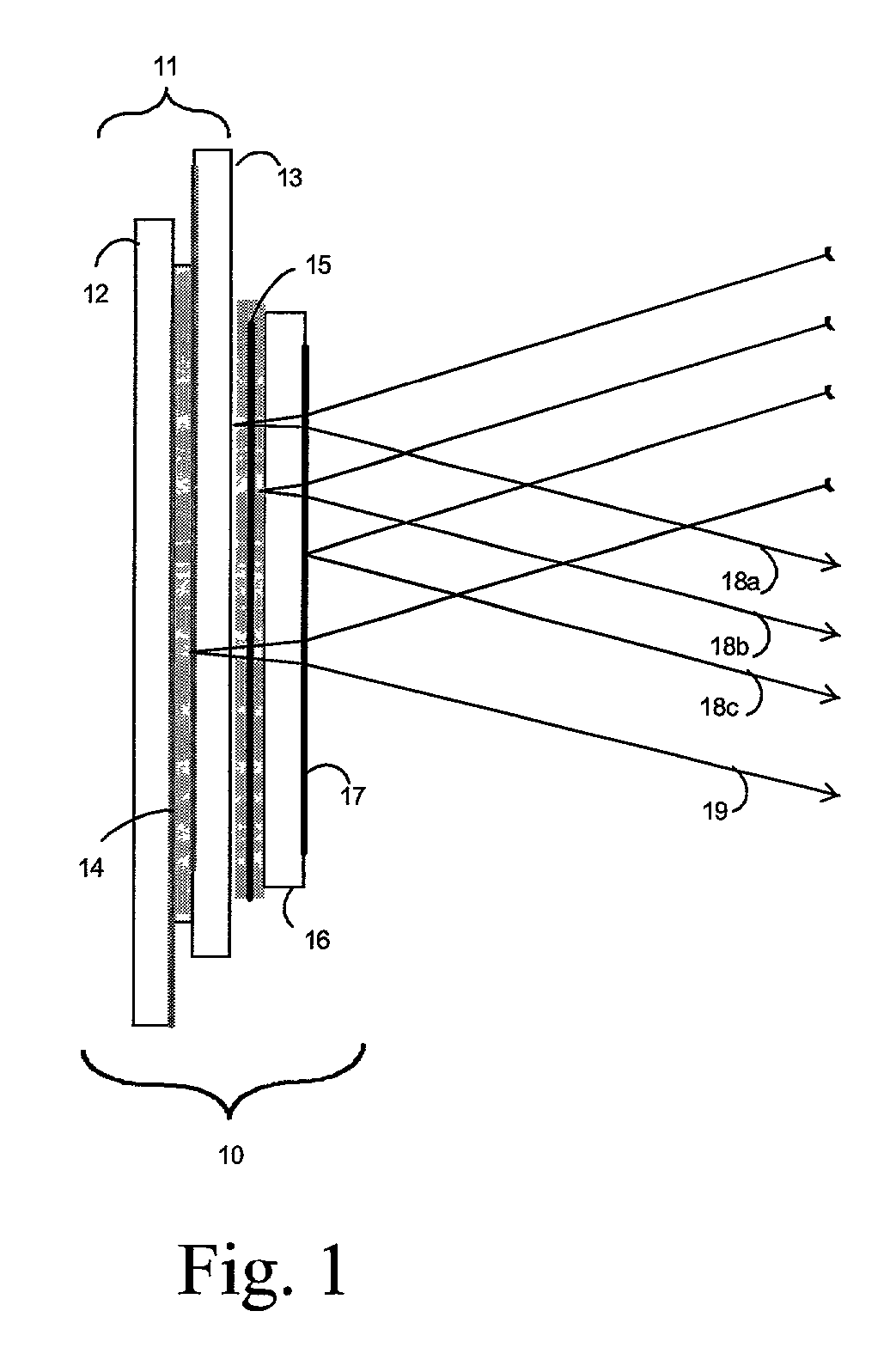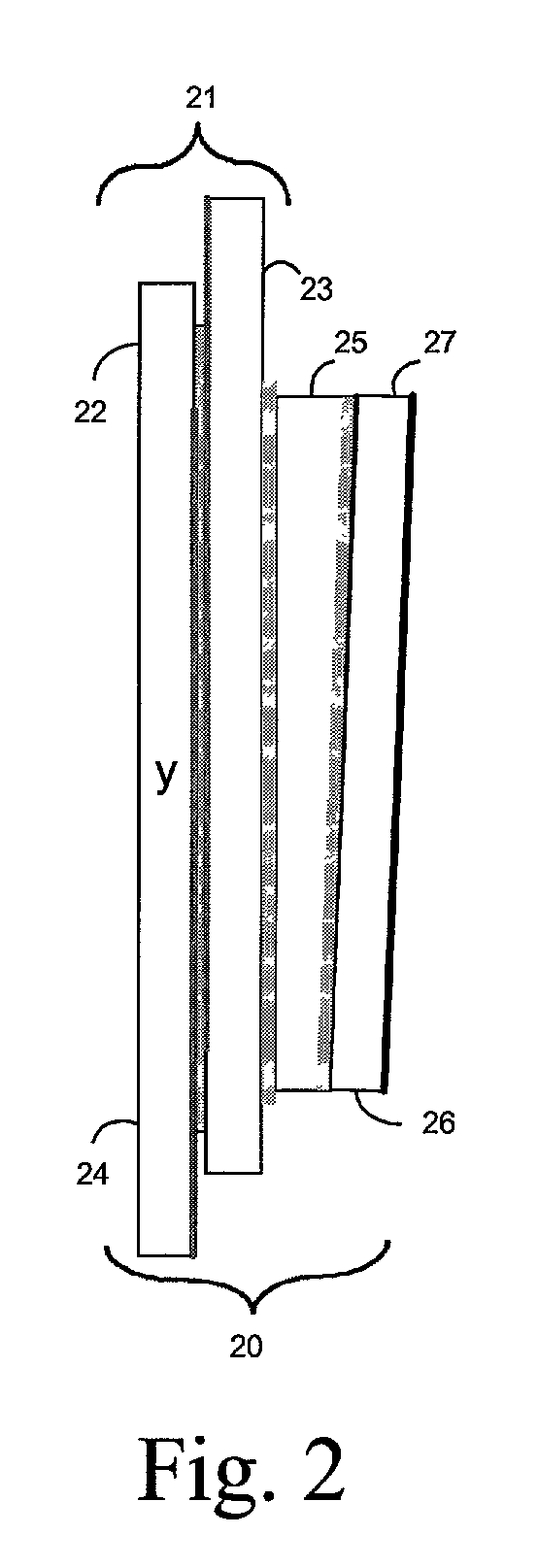Liquid crystal cell for use in coherent beams
a liquid crystal cell and coherent beam technology, applied in the field of optical modulators, can solve the problems of incompatible use of wedged substrates, interference between beams, spatially resolved light and dark fringes,
- Summary
- Abstract
- Description
- Claims
- Application Information
AI Technical Summary
Benefits of technology
Problems solved by technology
Method used
Image
Examples
Embodiment Construction
[0044] Successful practice of the invention requires suitable design and choice of materials. First, the wedge angle used for the spacer element must be appropriate for the overall system in which the inventive assembly will be used. While an angle of approximately 1 / 2 degree is used in the embodiments shown here, it should be understood that any angle may be used provided that it is sufficient to separate the beams that reflect from the liquid crystal layer (and other interfaces parallel to it), from beams that reflect from the wedged face (and other interfaces parallel to it). However, use of a wedge angle that is larger than needed can have deleterious effects, since the presence of a wedged element leads to chromatic dispersion, or prism action. Typically, the wedge angle will be in the range from 1 / 4 degree to 8 degrees.
[0045] The beam propagation angles are well-known to those skilled in optics design, and in addition may be calculated using ray-tracing programs and the like.
[...
PUM
| Property | Measurement | Unit |
|---|---|---|
| angle | aaaaa | aaaaa |
| thick | aaaaa | aaaaa |
| thick | aaaaa | aaaaa |
Abstract
Description
Claims
Application Information
 Login to View More
Login to View More - R&D
- Intellectual Property
- Life Sciences
- Materials
- Tech Scout
- Unparalleled Data Quality
- Higher Quality Content
- 60% Fewer Hallucinations
Browse by: Latest US Patents, China's latest patents, Technical Efficacy Thesaurus, Application Domain, Technology Topic, Popular Technical Reports.
© 2025 PatSnap. All rights reserved.Legal|Privacy policy|Modern Slavery Act Transparency Statement|Sitemap|About US| Contact US: help@patsnap.com



